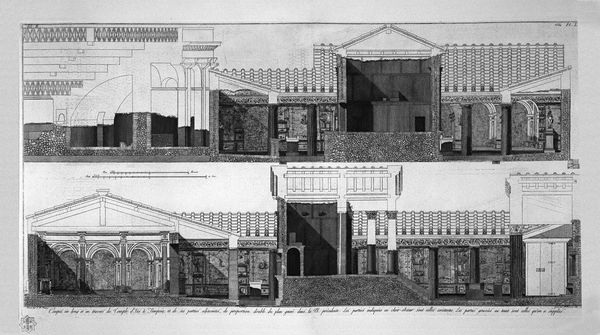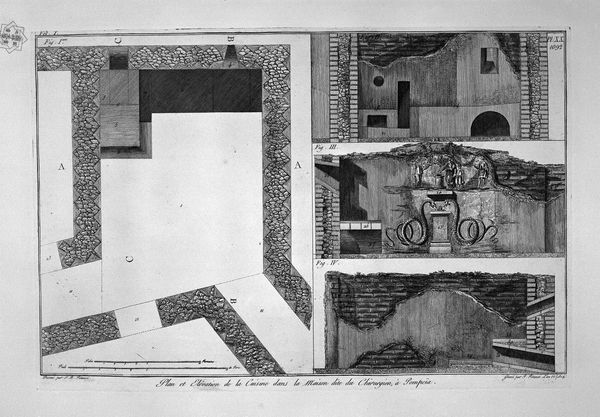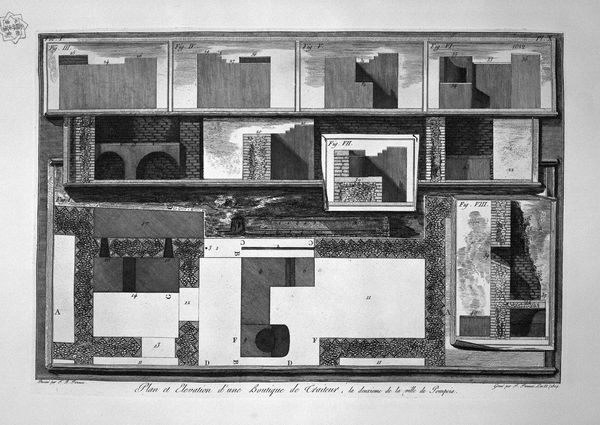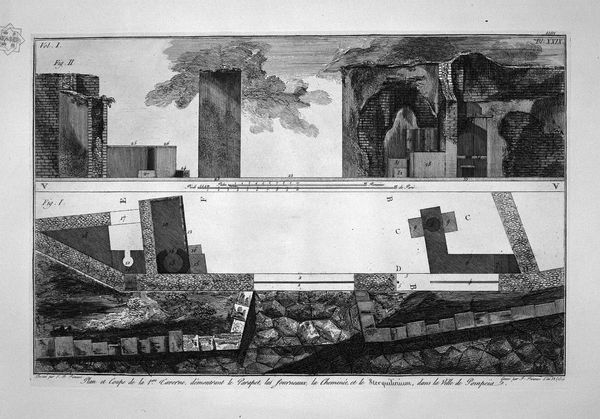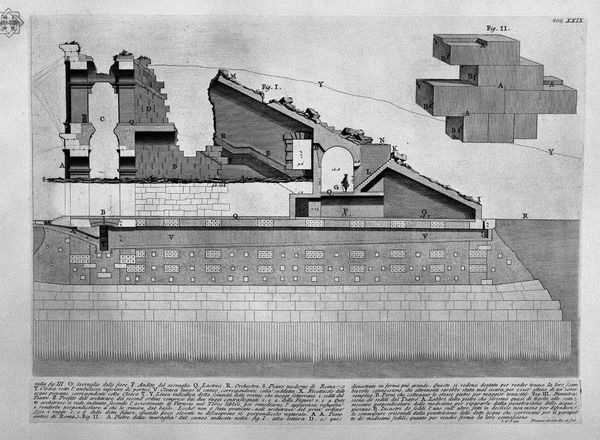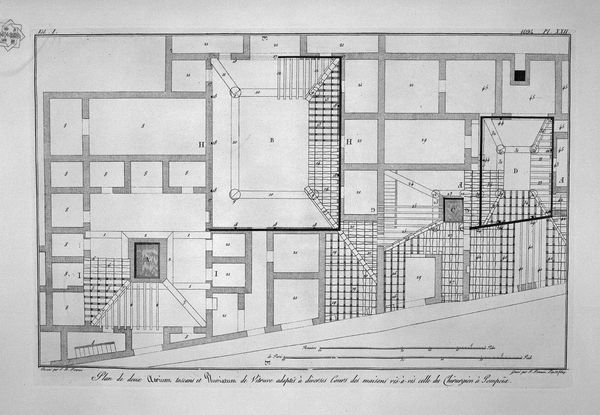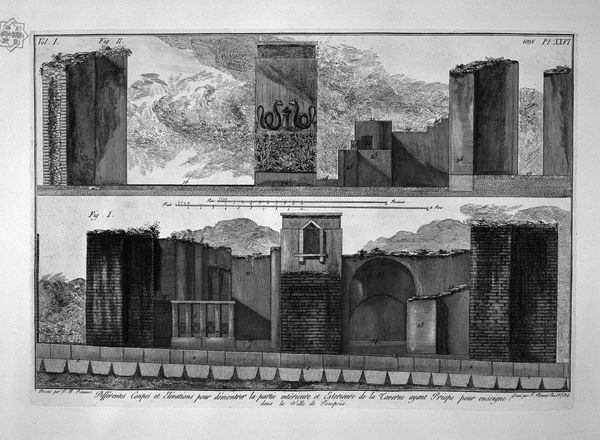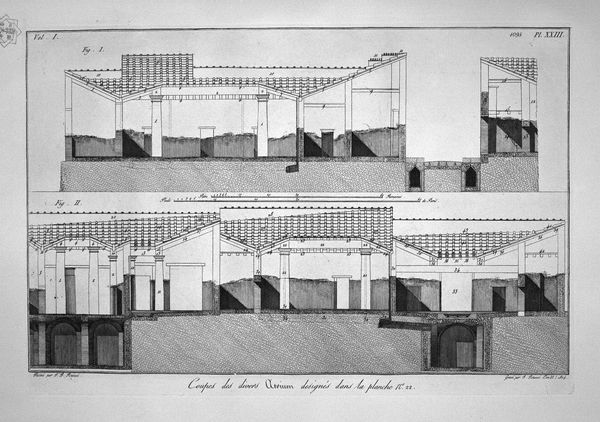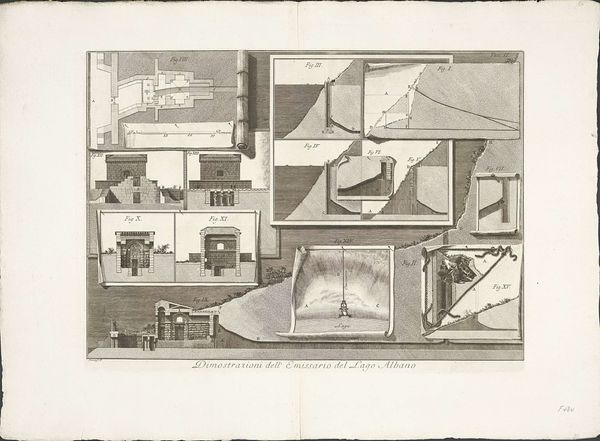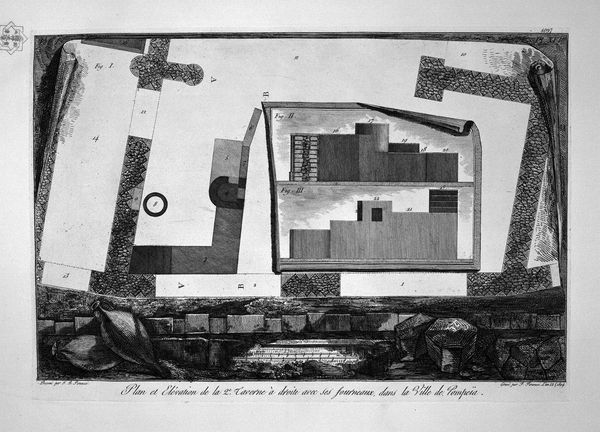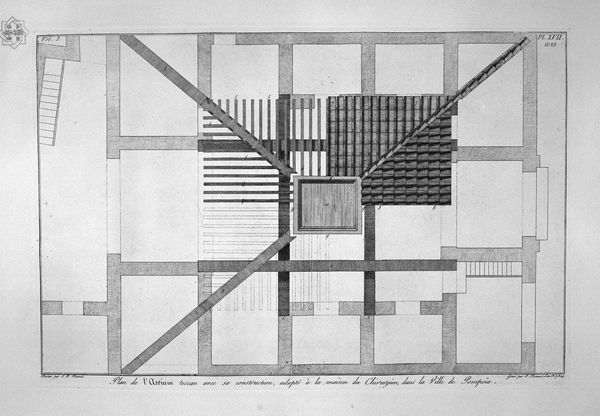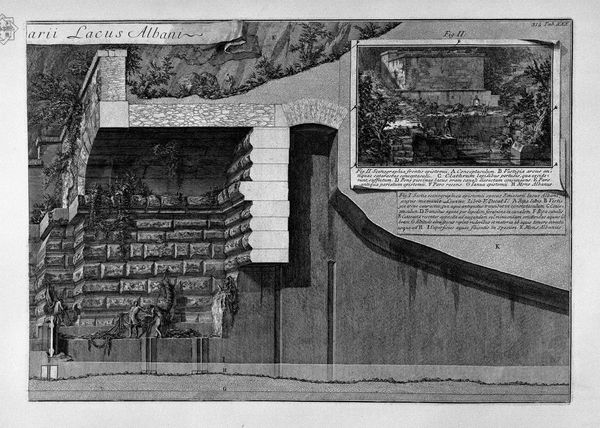
drawing, print, etching, engraving, architecture
#
architectural sketch
#
drawing
#
neoclacissism
#
architectural landscape
# print
#
etching
#
architectural plan
#
architectural design
#
house
#
architectural form
#
architectural concept
#
geometric
#
arch
#
elevation plan
#
architectural drawing
#
architectural proposal
#
history-painting
#
exterior design
#
engraving
#
architecture
Copyright: Public domain
Editor: This is "Plan and cross section of the first tavern," an etching by Giovanni Battista Piranesi. I find the precision of the lines really striking. The layering of architectural elements is so intricate! What stands out to you most when you look at this? Curator: For me, it's the focus on the very materials that constituted the daily life of 18th-century Pompeii and how they were assembled through labor. Piranesi isn't just representing a tavern; he’s meticulously documenting the social and economic conditions embedded in its construction. Notice the differentiation in materials, the precise rendering of stone, brick, and even what looks like packed earth. It forces us to think about the labor that extracted, shaped, and assembled them. Editor: That's a really interesting point about the labor involved. It's easy to overlook that when admiring the technical skill. Are you saying this piece isn't really about neoclassicism, as a movement? Curator: While Piranesi was certainly working within a Neoclassical context, appreciating classical forms, to focus solely on that overlooks his material concerns. Think about the etcher's own labor, mimicking through printed multiples, the tangible substance of buildings and considering its distribution as a form of material exchange, making information about the physical world available. Editor: So, it’s more about how the representation and reproduction of architecture becomes another form of production itself? I never considered prints as a reflection of labor before. Curator: Exactly! And think about who consumed these prints. Were they just wealthy patrons appreciating the 'grand tour'? Or were architects and builders using them as references, influencing future construction, impacting labor practices? The material reality of the print had implications far beyond its aesthetic appeal. Editor: This has definitely shifted my perspective. I now see the print as evidence of its moment in time—all those materials, processes, and their distribution. Curator: Precisely! By acknowledging that materiality, it opens the door to deeper interpretations, ones which acknowledge the consumption as well.
Comments
No comments
Be the first to comment and join the conversation on the ultimate creative platform.
